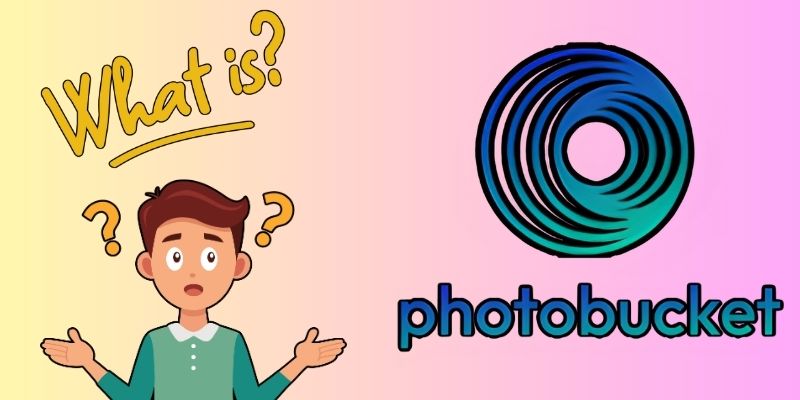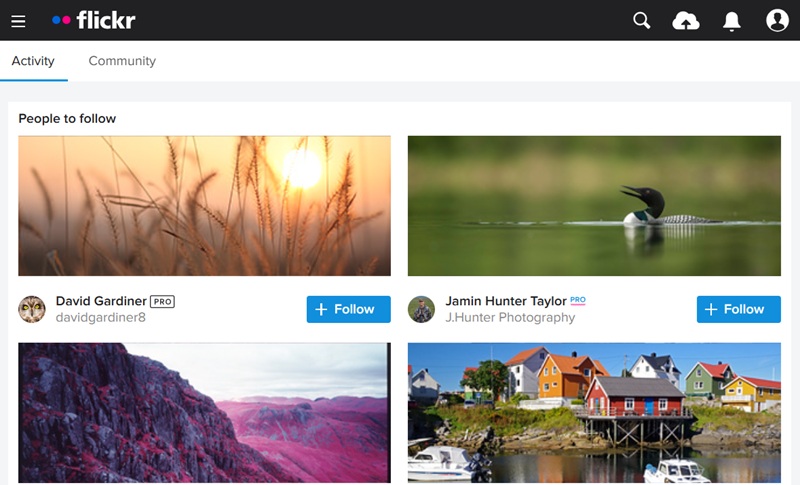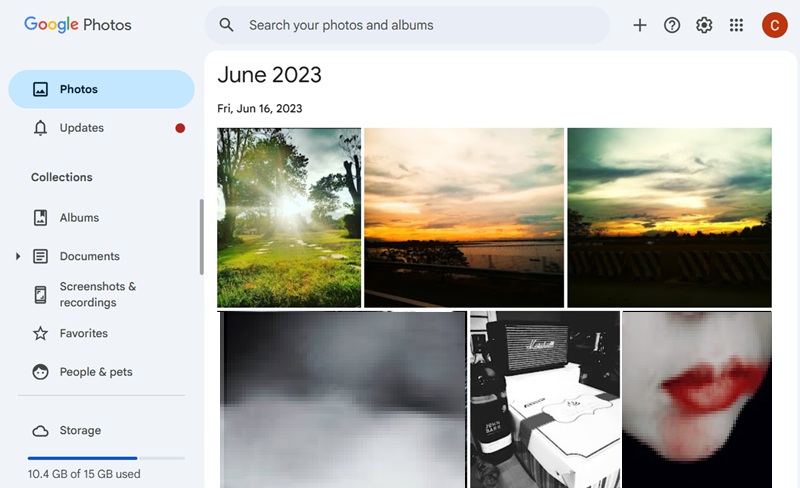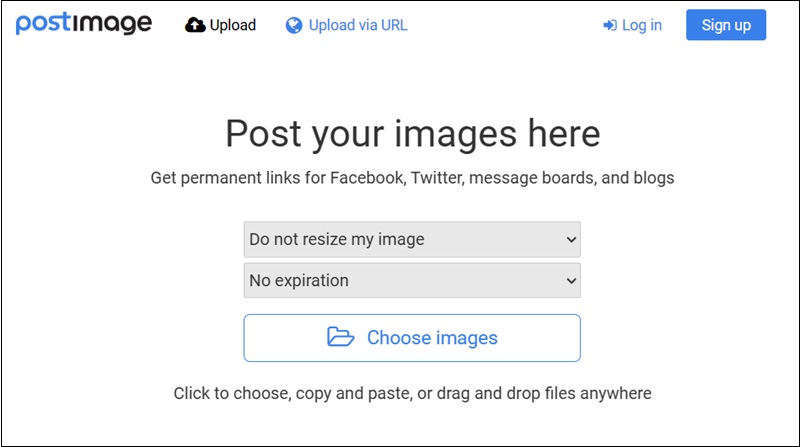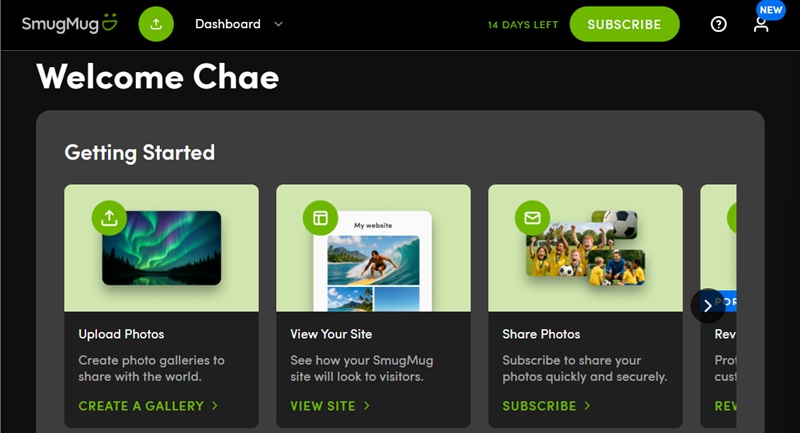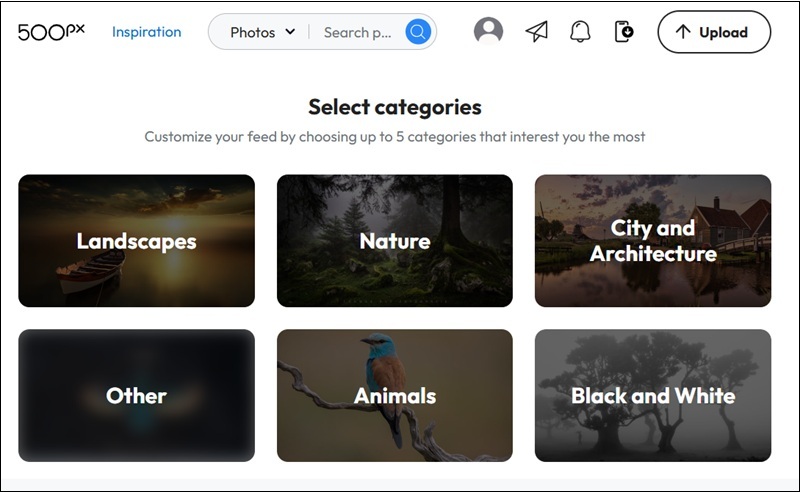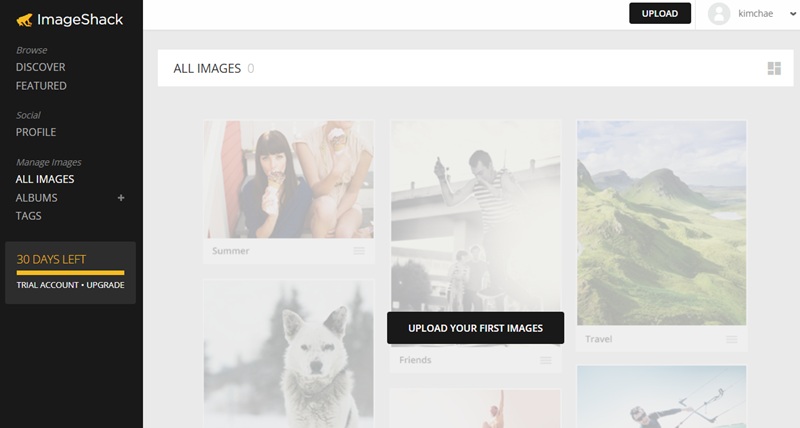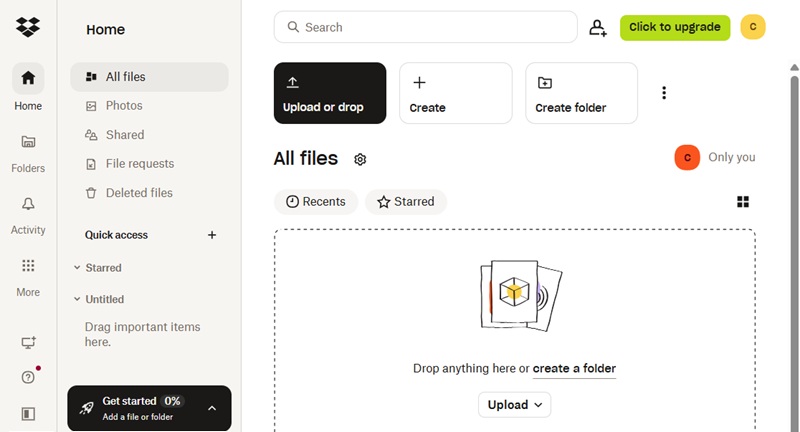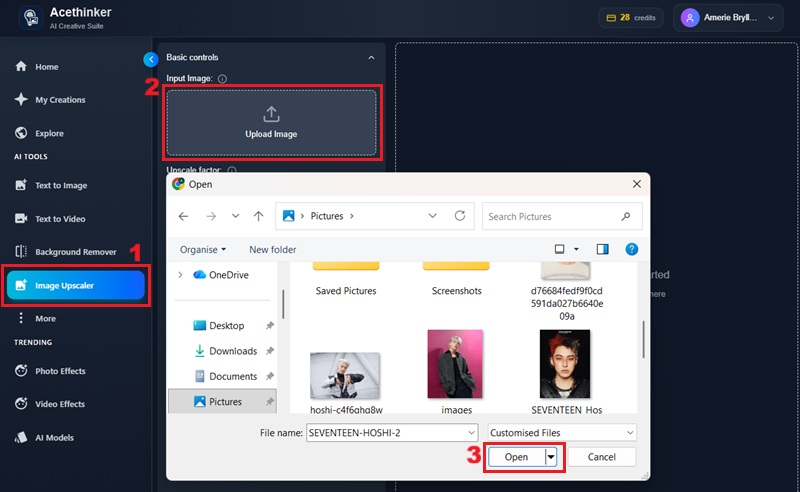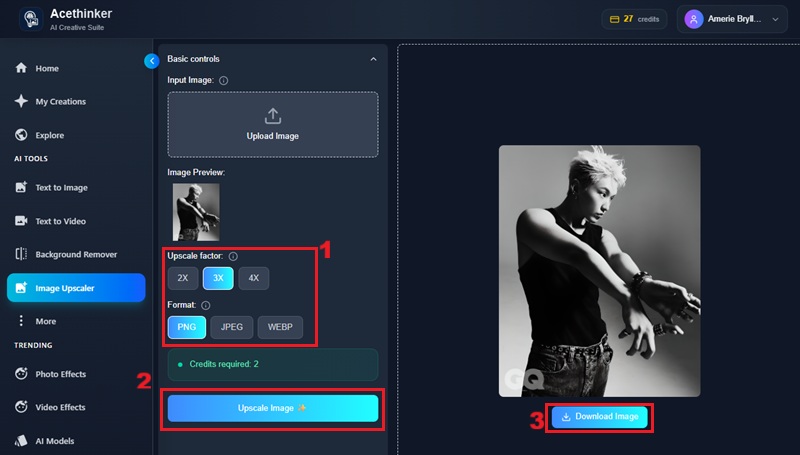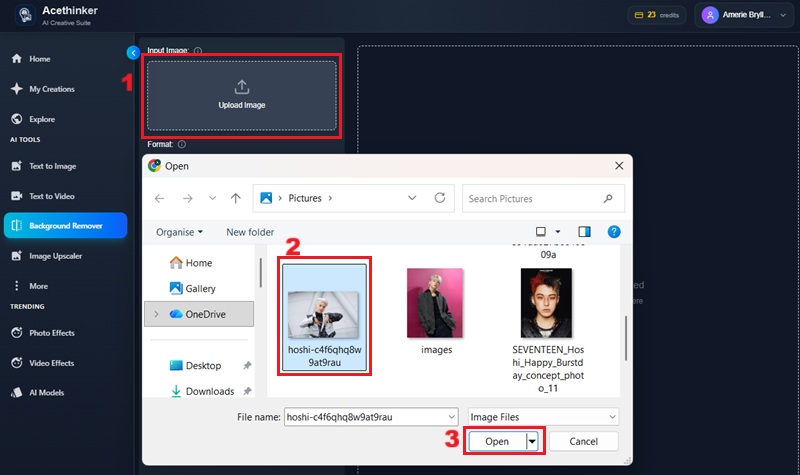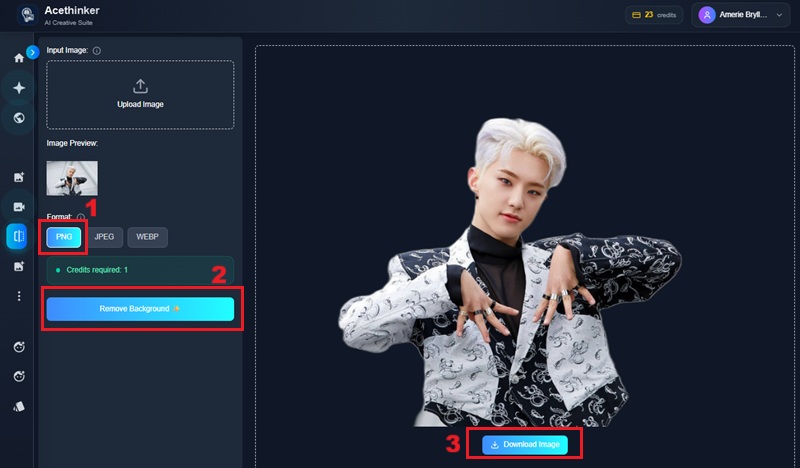
What Happened to Photobucket?
As we explored the journey of Photobucket, we found that it has changed a lot from its early days as a free and popular image-hosting site. Today, Photobucket mainly focuses on being a paid image storage and hosting service. The platform offers different subscription plans that provide more storage, privacy options, and features for managing photos. However, unlike before, free users now face many limits, such as small storage space and visible watermarks on their pictures.
Photobucket's Pricing Model
Photobucket runs on a tiered pricing model. This means users can choose from several paid plans depending on their needs. The free version of the Photobucket gives only a small amount of space. On the other hand, paid plans can go up to hundreds of gigabytes or even more. These paid plans remove watermarks, allow hotlinking (sharing images directly on other sites), and provide ad-free experiences. However, many users feel that the prices are too high compared to other places like Photobucket such as Imgur or Google Photos. Here is the breakdown of the Photobucket's pricing plan:
- My Bucket Plan: $5 Monthly (+ tax)/ $50 Yearly (+ tax) 1TB of storage. This includes mobile auto backup, album creation, sorting tools, compression, and more.
- Group Buckets Plan: $8 Monthly (+ tax) || $80 Yearly (+ tax)/1TB of storage. This includes group sharing, personal & social sharing, mobile auto backup, album creation, and more.
- Hosting Plan: $13 Monthly (+ tax) || $140.29 Yearly (+ tax) All the storage you need. For this one, users get unlimited storage, third-party image hosting, and an ad-free experience.
Common Complaints About Photobucket
When we looked deeper, we found that many users shared similar frustrations about Photobucket's new system. Because of these issues, many people who once used Photobucket for blogs, forums, or personal albums moved to other platforms. Here are some of these reasons:
- High subscription costs: Many argue that the high cost of hosting images is not justified.
- Limited free storage: Free users can only upload a few pictures before reaching the storage limit.
- Watermarking and hotlinking restrictions: Free accounts often show large Photobucket watermarks, and hotlinking is blocked unless users upgrade to paid plans.
Who Still Uses Photobucket and Why
Even though it lost many users, Photobucket still has a loyal group who continue using it. Some stay because:
- They have old photo archives stored there and don't want to transfer everything.
- They trust Photobucket's security and backup features for personal or business use.
- Certain website owners and forum users continue to rely on it for image hosting due to its ease of managing links and galleries.
Best Photo Hosting Sites like Photobucket
| Service | Free Trial & Premium Options | Watermarks Options | Supported Formats/Limits |
|---|---|---|---|
| Imgur | Free to use, many uploads allowed. | No enforced watermarking by default | JPG, PNG, GIF, APNG, TIFF, BMP, MP4, WEBM and more.
Max - 20 MB for non-animated, -200 MB for GIFs/videos. |
| Flickr | Up to 1,000 photos/videos for free users
Monthly Retail Price: $11.00 |
Flickr does not automatically watermark images | JPG, PNG, GIF, MP4, WEBM and more.
Photo file limit - 200 MB, video limit - 1 GB (free) |
| Google Photos | 15 GB free (shared with Drive & Gmail)
Google One plans: $1.99/month for 100GB of storage |
Does not watermarks images | JPG, PNG, GIF, RAW formats supported. |
| PostImage | Free (ad-supported)
$14.99 per month |
No watermarks options | JPG, PNG, WEBM and more.
Max - 32 MB per image (basic) / up to 64 MB with paid plan |
| Service | Free Trial & Premium Options | Watermarks Options | Supported Formats/Limits |
|---|---|---|---|
| SmugMug | 14-day free trial
Plans (Direct: $25 / month; Portfolio: $31/mo; Pro: $45/mo) |
You can add watermarks | JPEG, JPG, PNG, RAW, WEBP, and more. |
| 500px | 30-day free trial
Awesome plan: $47.90/year |
Users can choose to watermark their images | JPEG, PNG, and more. |
| ImageShack | 30 days free trial
Pro plan at $29.99/month |
Paid accounts can watermark automatically | JPEG, PNG, BMP, TIFF, GIF, and more.
File size limit - 25 MB |
| Dropbox | Free Basic: 2 GB
Plus: US$9.99/month (2TB) |
No watermark by default | JPEG, PNG, RAW, video, and more. |
1. Imgur
The first on the list of sites similar to Photobucket is Imgur. If you prefer a platform that prioritizes rapid image sharing and viral content dissemination, Imgur presents a compelling alternative. This image hosting platform is widespread for its extensive collection of memes, GIFs, and viral images. This makes it an ideal choice for users looking to share content quickly across social media and online communities like Reddit, Facebook, Bluesky, and more. Additionally, creating an account can also be done quickly and easily by using your Google, Apple, or email accounts. Apart from that, when we tried to upload an image, it allowed us to add pictures to our personal albums or share them with specific communities. With this, you can maintain a curated collection of visual content while engaging with broader online audiences. Compared to Photobucket, Imgur presents a more community-driven experience and boasts a more generous free tier for image uploads.
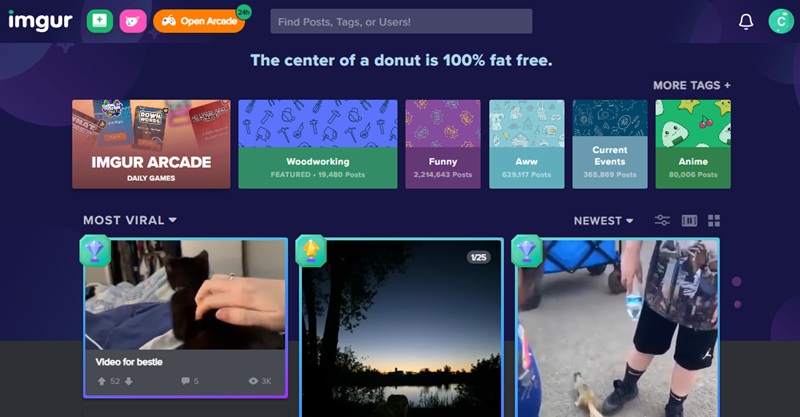
- It also has an attribute that automatically resizes your images, optimizing them for web viewing without significant loss of quality.
- On top of that, you can also access this website for free on your mobile device, tablet, or desktop.
- While Imgur excels in quick sharing, it may not be suitable for long-term archival storage due to its focus on short content and lack of advanced organizational tools.
2. Flickr
Flickr is another places like Photobucket. It is a reputable platform that is well-known for its strong picture management features and active photographer community. Unlike Photobucket, Flickr has cultivated a strong reputation for high-quality image storage and sharing that attracts serious photographers and visual artists. As we explored this website, we found that it allows you to upload more than 1000 photos and videos for free. This makes it an attractive option for users seeking extensive free storage without the restrictive limitations often found on other platforms. Moreover, as you upload an image, you can add it to your albums or organize it into collections based on themes or events. Aside from that, you can set your owner settings for each photo album, allowing for public visibility or restriction to registered users. Furthermore, this alternative will enable you to add descriptions, tags, and comments to enhance discoverability and contextual understanding for your images.
- With sophisticated features like geotagging and EXIF data retention, Flickr sets itself apart even further.
- It also offers 1TB of free storage space, enabling users to store a vast quantity of high-resolution images.
- Because of its numerous functions and settings, which might at first seem intimidating, it might not be as user-friendly for novice users.
3. Google Photos
Suppose you are deeply integrated into the Google ecosystem. In that case, Google Photos stands out as an exceptional alternative to Photobucket for photo storage. It seamlessly integrates with other Google services and delivers 15 GB of free cloud storage shared across Gmail, Google Drive, and Photos. With this generous storage, users can store a significant volume of images and videos. In contrast to Photobucket, Google Photos provides robust AI-driven indexing for effortless content retrieval. It comes with advanced organizational tools that utilize AI-powered search capabilities to find specific photos quickly. As we explored it, you can easily discover pictures by people, places, or things without manual tagging. Moreover, this Photobucket alternative also offers collaborative albums that enable you to share collections with friends and family effortlessly.
- It also enables you to organize your photos in a variety of ways, including by location, date, or through custom albums.
- Its automated backup capability is another noteworthy advantage, guaranteeing that all of your priceless memories are securely kept.
- While this site like Photobucket provides substantial free storage, it is important to note that the 15GB allocation is shared across all Google services.
4. PostImage
For users who are searching for websites like Photobucket that prioritize simplicity and efficiency for image uploads, PostImage is an effective solution. It is similar to the rapid image-sharing functionalities found in Photobucket. However, this option does not have irrelevant features that can complicate the user experience. We tried to upload an image, and found that it supports diverse image formats, including JPG, PNG, and GIF. It also provides you with hotlinks for direct embedding, making it ideal for forums, blogs, and other web applications where immediate image display is crucial. Another noteworthy feature we discovered is its ability to automatically resize images upon upload, which optimizes them for web use while preserving quality. This ensures faster loading times and reduces bandwidth consumption for your website or blog content.
- This option also supports plugins to add image uploading to your messages, board, blog, or website.
- All your images are uploaded to the servers of the PostImage network, providing reliable and secure hosting for your visual content.
- Unlike more comprehensive platforms, this tool lacks advanced photo editing capabilities and social networking features, such as photo albums.
5. SmugMug
For professional photographers and serious fans who want a high-quality place to show and sell their photos, SmugMug is a smart alternative to Photobucket. Among the sites like Photobucket, this medium stands out with its customizable portfolio websites. It also has robust e-commerce tools, and unlimited storage for high-resolution images. It offers a 14-day free trial version, allowing you to decide whether SmugMug will be used primarily for professional or personal purposes. Then, you can create your own gallery where you can upload photos and videos of any size and resolution without compression. Moreover, you can create your own website to showcase your photographic works with a professional and personalized online presence. Unlike Photobucket, SmugMug uses Amazon Web Services to store photos and videos safely. This helps the platform handle billions of files with fast speed, strong performance, and reliable access anytime.
- It also provides comprehensive security features, including password protection, watermarking, and the ability to turn off downloads for your photos.
- This Photobucket alternative also offers advanced analytics to track visitor engagement and sales for your photography business.
- SmugMug offers powerful features and a strong system, but its higher subscription cost can be expensive for hobbyists or people with smaller budgets.
6. 500px
Next on the list of websites like Photobucket is 500px. This platform is designed with photographers in mind, offering a community-driven environment for sharing, finding, and licensing high-quality photos. It allows you to upload your own images and engage with an international community of peers and enthusiasts. 500px places more emphasis on creative and technical brilliance than Photobucket, which makes it a useful platform for visibility and professional growth. When it comes to sharing, you can choose from different categories. This enables precise categorization of your work for optimal visibility within specific genres. Furthermore, it is more than just a storage solution as it functions as a dynamic social network. In that line, users can follow other photographers, comment on images, and participate in challenges.
- It allows you to make your photos available for licensing, providing an added revenue stream for photographers.
- This alternative allows you to upload thousands of photographs without compression, so the integrity and detail of your work are preserved.
- Since the platform is designed for professional photography, casual users may find it less suitable for simple image sharing.
7. ImageShack
Another viable Photobucket alternative is ImageShack. This platform provides straightforward image hosting with features tailored for both personal and professional use. When you click the upload option of this alternative, you can pick where you want to store the image. You can either upload your photos to your pictures or albums. Besides, it has an option to resize your images during upload; you can select from various presets, such as 150 x 100 pixels, 320 x 240 pixels, or other options. This functionality of the platform is particularly beneficial for optimizing your images for web display. Unlike Photobucket, ImageShack also offers direct linking for easy embedding on websites, forums, and social media platforms. Meaning you can seamlessly integrate your hosted images into diverse online environments. Additionally, it allows you to access your images from anywhere with its cloud-based storage, ensuring accessibility and flexibility for managing your visual assets.
- It provides organization tools such as tags and albums to help you categorize your collection.
- This platform, unlike some alternatives like PostImage, is ad-free even on your free trial, giving you an uninterrupted browsing and uploading experience.
- The free version of this Photobucket alternative offers limited storage space of 15 GB, which might not be sufficient for users with ample photo collections.
8. Dropbox
Dropbox, while primarily known as a cloud storage service, also functions as a powerful alternative to Photobucket for image storage and sharing. Its potent synchronization capabilities allow users to access their photos across multiple devices. This guarantees that you can effortlessly control your visual assets from anywhere. When you upload your images to Dropbox, they are automatically backed up and accessible from any of your linked devices. For instance, you have the flexibility to upload a photo from your desktop computer and then seamlessly view or share it from your smartphone or tablet. Compared to Photobucket, Dropbox offers superior version control, enabling you to revert to previous image iterations. It also keeps your photos safe with secure storage and detailed sharing controls, like password protection and expiring links.
- This website provides advanced collaboration features, enabling multiple users to work on shared photo albums or projects simultaneously.
- With the free version, users can keep up to 2 GB of data, making it a suitable option for individuals with moderate storage needs.
- The primary drawback of Dropbox as a dedicated image storage solution is its lack of specialized photo-editing tools and advanced gallery customization options.
Extra Tips: Make Your Images Stunning
For better optimization and visual impact, consider using tools for image enhancement. With tools like AceThinker AI Image Generator and Editor, you can effortlessly refine your images before uploading them. Whether they are for storage or for sharing, enhancing your images can significantly improve their quality and appeal to your audience. Moreover, this online tool provides various AI-powered editing features. These features include background removal, text-to-image, image upscaling, and the ability to blur part of a picture for privacy or style purposes. These features can transform ordinary images into professional-grade visuals, making them more suitable for platforms emphasizing high-quality content. That said, let's explore some of the features of the AceThinker AI Image Generator and Editor.
Image Upscaling
This feature of the AceThinker AI Image Generator and Editor enhances image resolution without compromising quality. It utilizes advanced algorithms to intelligently fill in missing pixels for your images. This process allows for the creation of larger, sharper images from smaller originals. It is beneficial for sites requiring high-resolution imagery display, like Flickr and SmugMug. Besides, it allows you to pick the upscale factor for your images, where you can choose from 2X, 3X, and 4X, so that you can precisely control the output dimensions based on your specific requirements. On top of that, it supports increasing JPEG resolution as well as PNG and WEBP images, offering broad compatibility across various file formats. You can proceed below to discover how you can easily use the upscaling feature of this tool.
Step 1 Access the Online Tool
The first step involves navigating to the AceThinker AI Image Generator and Editor website through your web browser. Then, if you have an account, you can log in by entering your credentials. If you do not have an account, you will need to register for one to access the full suite of features of the online tool.Step 2 Upload Image
Once you have successfully logged in, locate the "Image Upscaler" option on the left panel of the tool and click it. Then, hit the "Upload Image" button to select the image you wish to enhance from your local storage. After that, click "Open" to upload the selected file to the platform.Step 3 Upscale and Download Photo
Following the upload, you will be presented with options to select the desired upscale factor; you can choose which suits your needs. Then, choose the format and click the "Upscale Image" option to proceed with upscaling your photo. Subsequently, wait until the process is done and hit the "Download Image" option to save it on your device.Background Remover
Another noteworthy feature of the AceThinker AI Image Generator and Editor is its sophisticated AI-powered background removal capability. This tool enables you to precisely isolate subjects from their backgrounds. With this option, you can effortlessly create transparent backgrounds, making images suitable for product photography or graphic design. Besides, it does not compromise the quality of the subject, which is crucial for maintaining professional visual standards. It also enables you to download the result in PNG format, which preserves transparency and is ideal for various design applications. Here are the detailed steps on how to use this feature effectively.
Step 1 Access the Background Remover
Begin by navigating to the online tool. Once you are on the platform, make sure to log in to your account. From the main dashboard, select the "Background Remover" option. This action will direct you to an interface specifically designed for background manipulation.Step 2 Upload the Photo
Next, click the "Upload Image" button to access your local storage. Then, pick the image you want to remove the background from. Afterward, click "Open" to upload it to the platform for processing.Step 3 Remove Background and Save Photo
Once uploaded, choose the format PNG to preserve transparency. Then, on the lower part of the tool, click the "Remove Background" option to initiate the process. The AI algorithms will automatically detect and eliminate the background of your image. After that, hit the "Download Image" to keep your image for offline viewing.Conclusion
In conclusion, Photobucket is no longer the top choice for image hosting and storage, primarily because of its high prices and limited free options. Thankfully, there are now many reliable and affordable alternatives available. Platforms like Imgur and PostImage are ideal for quick sharing. In contrast, Flickr, SmugMug, and 500px cater to professional photographers who require advanced tools and extensive storage. Meanwhile, Google Photos and Dropbox are ideal for everyday users who value accessibility and cloud syncing. Therefore, choose the platform that best matches your storage, sharing, and privacy needs. Additionally, always back up your images across multiple platforms to keep your valuable memories safe and easy to access anytime.
